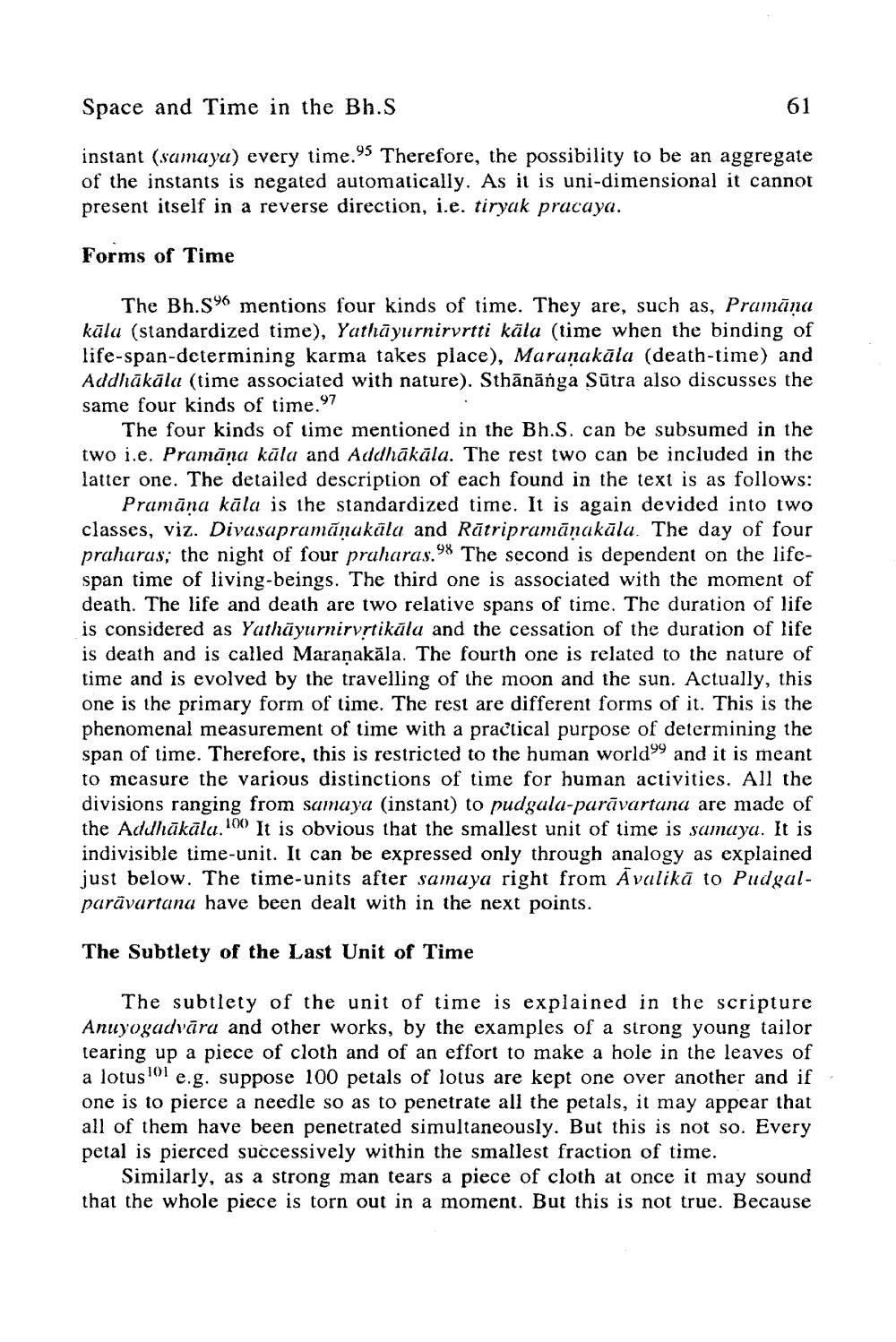________________
Space and Time in the Bh.S
instant (samaya) every time." Therefore, the possibility to be an aggregate of the instants is negated automatically. As it is uni-dimensional it cannot present itself in a reverse direction, i.e. tiryak pracaya.
Forms of Time
The Bh.S% mentions four kinds of time. They are, such as, Pramāņa kāla (standardized time), Yathāyurnirvrtti käla (time when the binding of life-span-determining karma takes place), Maraṇakāla (death-time) and Addhākāla (time associated with nature). Sthānanga Sūtra also discusses the same four kinds of time.97
61
The four kinds of time mentioned in the Bh.S. can be subsumed in the two i.e. Pramāņa kāla and Addhākāla. The rest two can be included in the latter one. The detailed description of each found in the text is as follows: Pramāņa kāla is the standardized time. It is again devided into two classes, viz. Divasapramāṇakāla and Rātripramāṇakāla. The day of four praharas; the night of four praharas.98 The second is dependent on the lifespan time of living-beings. The third one is associated with the moment of death. The life and death are two relative spans of time. The duration of life is considered as Yathāyurnirvṛtikāla and the cessation of the duration of life is death and is called Maraṇakāla. The fourth one is related to the nature of time and is evolved by the travelling of the moon and the sun. Actually, this one is the primary form of time. The rest are different forms of it. This is the phenomenal measurement of time with a practical purpose of determining the span of time. Therefore, this is restricted to the human world99 and it is meant to measure the various distinctions of time for human activities. All the divisions ranging from samaya (instant) to pudgala-parāvartana are made of the Addhākāla.100 It is obvious that the smallest unit of time is samaya. It is indivisible time-unit. It can be expressed only through analogy as explained just below. The time-units after samaya right from Avalika to Pudgalparāvartana have been dealt with in the next points.
The Subtlety of the Last Unit of Time
The subtlety of the unit of time is explained in the scripture Anuyogadvāra and other works, by the examples of a strong young tailor tearing up a piece of cloth and of an effort to make a hole in the leaves of a lotus101 e.g. suppose 100 petals of lotus are kept one over another and if one is to pierce a needle so as to penetrate all the petals, it may appear that all of them have been penetrated simultaneously. But this is not so. Every petal is pierced successively within the smallest fraction of time.
Similarly, as a strong man tears a piece of cloth at once it may sound that the whole piece is torn out in a moment. But this is not true. Because




